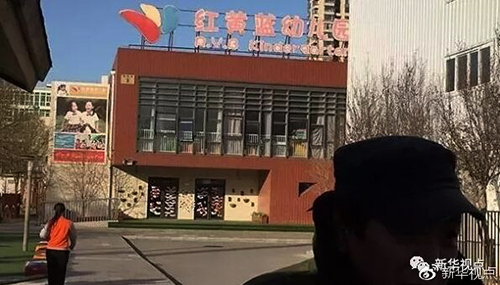All kindergartens in nation to be inspected
 |
|
RYB Education Kindergarten, a well-known chain of preschools, has been the focus of a huge public outcry since Thursday. [Photo/Weibo] |
China’s top education authorities ordered on Friday an immediate inspection of all kindergartens across the country amid a number of reported child abuse cases.
The recent cases reflect management problems in some kindergartens, and education authorities at all levels must attach greater importance to preschool education, establish a regular supervision mechanism for the operation of kindergartens and improve the accountability system to punish those involved in child abuse, the Education Steering Committee of the State Council, China’s Cabinet, said in a statement.
At least three incidents have been reported this month in which children were assaulted or were suspected of being abused.
In the most recent case, RYB Education Kindergarten, a well-known chain of preschools, has been the focus of a huge public outcry since Thursday.
On Wednesday night, some parents whose children attended the Xintiandi branch of RYB Education Kindergarten in Beijing’s Chaoyang district called the police, alleging that their children were pricked with needles and fed unidentified white pills at the kindergarten. Some claimed that their children were molested or forced to strip as punishment, according to Xinhua News Agency.
Beijing police and the education commission said they were investigating the case but had reached no conclusion.
RYB Education Inc, the parent company of the Xintiandi branch kindergarten, said in a statement on Friday that the accused teachers had been suspended and the company was cooperating with police.
Its shares slumped by 42 percent at the opening of trading on the New York Stock Exchange on Friday, almost wiping out all of the 44 percent rise in the stock since its IPO in September.
In response to rumors on social media that the Xintiandi branch’s headmaster is a family member of an active-duty soldier at a regiment of the People’s Liberation Army, and that the soldier was involved in the abuse case, the Ministry of National Defense said on Friday that a preliminary internal investigation found no involvement of any PLA staff in the case.
“The headmaster of the kindergarten is a family member of a veteran,” said Feng Junfeng, political commissar of the regiment. “So far, we’ve found that no one from the regiment has ever participated in the operation of the kindergarten or been involved in sexually assaulting children.”
Feng said the regiment will assist the investigations, and if the accusation about the PLA is proved to be false, those who made the accusations should be held legally liable.
![Men ride camels in traditional Mongolian costumes at the Naadam festival held in Xi Ujimqin Banner, a banner under the administration of Xilin Gol League, Inner Mongolia autonomous region, Jan 9, 2017. [Photo/Xinhua] Men ride camels in traditional Mongolian costumes at the Naadam festival held in Xi Ujimqin Banner, a banner under the administration of Xilin Gol League, Inner Mongolia autonomous region, Jan 9, 2017. [Photo/Xinhua]](http://images.china.cn/attachement/jpg/site1007/20171124/f44d307d90cc1b81dc5606.jpg)
![A pair of giant pandas are released into the wild at Liziping Nature Reserve in Ya'an, southwest China's Sichuan Province, November 23, 2017.[Photo/China.org.cn] A pair of giant pandas are released into the wild at Liziping Nature Reserve in Ya'an, southwest China's Sichuan Province, November 23, 2017.[Photo/China.org.cn]](http://images.china.cn/attachement/jpg/site1007/20171124/f44d307d90cc1b81bb3403.jpg)